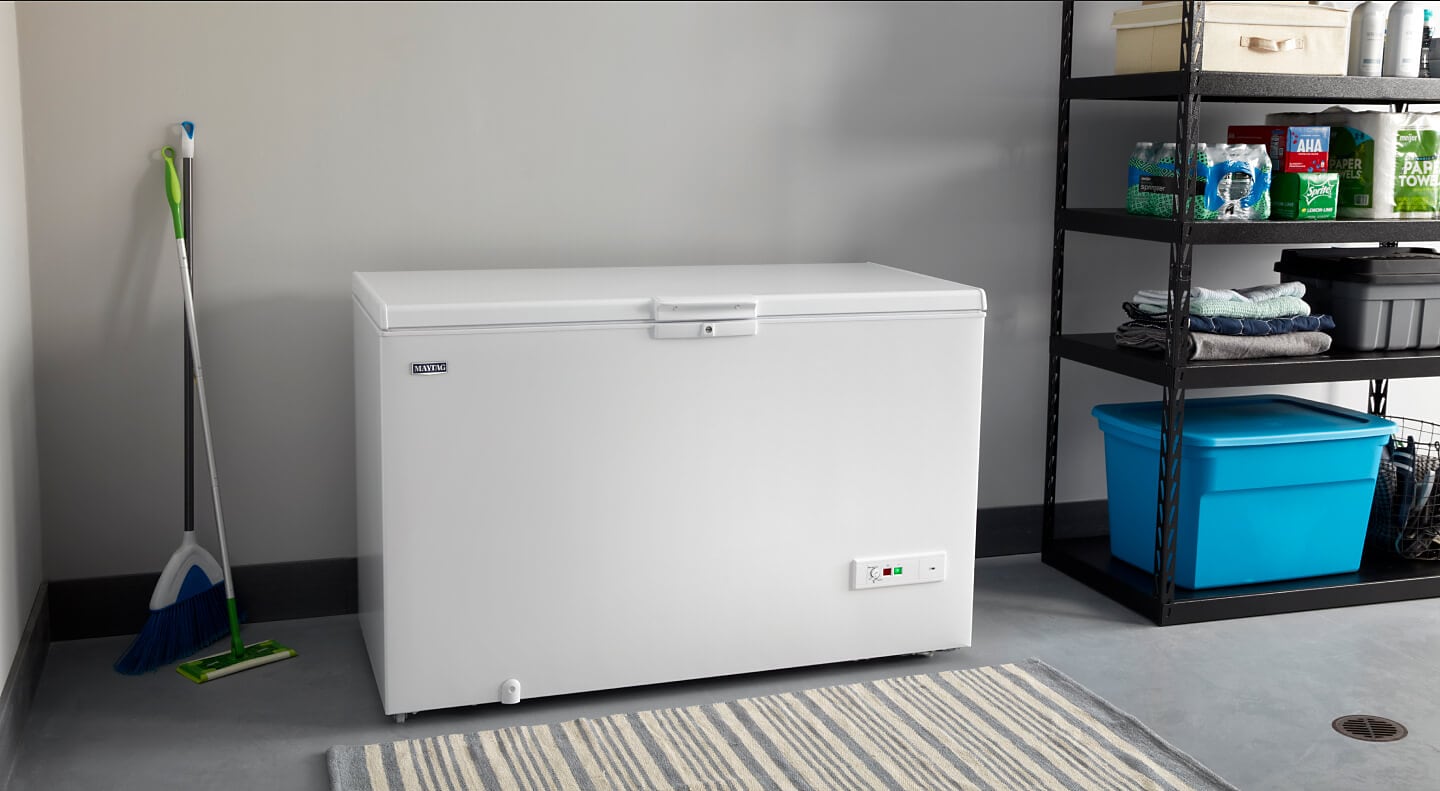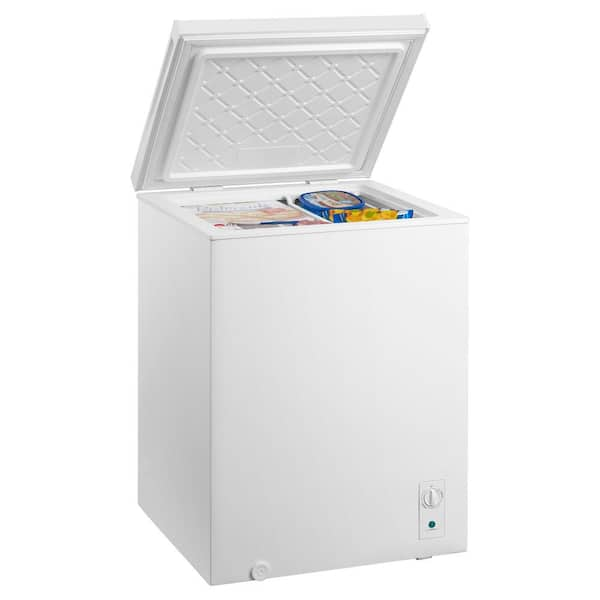Picture this: You head to your garage, eager to grab some frozen goodies from your trusty chest freezer. But instead of finding everything perfectly preserved, you discover that your freezer isn’t working.
Frustration sets in as you wonder what went wrong. You’re not alone in this dilemma. Many homeowners face the challenge of a malfunctioning chest freezer in their garage. It’s not just about losing your stock of frozen food; it’s about dealing with a disruption in your daily routine.
Understanding why your chest freezer isn’t working in the garage can save you time, effort, and money. Whether it’s due to temperature fluctuations, power issues, or even placement mistakes, identifying the root cause is key. Are you curious to find out how to solve this problem efficiently? Ready to prevent further issues and keep your freezer running smoothly all year long? Dive into this article to uncover practical solutions, tips, and preventative measures tailored for your specific needs. Your frozen food deserves a reliable home, and we’re here to help you ensure that. Keep reading to discover how you can tackle this problem head-on and restore your peace of mind.

Credit: www.maytag.com
Common Causes
Chest freezers in garages can stop working due to common issues. Understanding these causes helps in fixing the problem swiftly. Let’s explore some frequent reasons why your chest freezer might fail in the garage.
Temperature Extremes
Garages often experience high and low temperature swings. These extremes can affect your freezer’s performance. Freezers work best in stable temperatures. Extreme cold or heat can reduce efficiency or cause a complete shutdown.
Power Supply Issues
Power supply interruptions might be a cause for your freezer’s failure. Check if the freezer is plugged in correctly. Faulty wiring or a tripped circuit breaker can also stop the freezer from working. Ensure a steady power source to keep it running.
Thermostat Malfunctions
A faulty thermostat can lead to freezing problems. The thermostat controls the internal temperature. If it malfunctions, the freezer may not cool properly. Check if the thermostat is set correctly. Replacing a broken thermostat might solve the issue.
Diy Troubleshooting
Experiencing issues with your chest freezer in the garage? Start by checking the power supply and temperature settings. Ensure the freezer is plugged in properly and the circuit breaker hasn’t tripped. Adjust the thermostat to see if it resolves the problem.
Dealing with a chest freezer that suddenly stops working can be a frustrating experience, especially when it’s in the garage. Luckily, you don’t always need a technician to diagnose the problem. A bit of DIY troubleshooting can often save the day. Let’s dive into some practical steps to get your freezer back on track.Checking Power Connections
First things first, ensure your chest freezer is getting power. A loose plug or tripped breaker can easily be the culprit. Check the outlet by plugging in another device. If it doesn’t work, inspect your circuit breaker for any tripped switches. Sometimes, the simplest checks reveal the issue. Have you ever realized your freezer isn’t plugged in properly after spending hours troubleshooting? It happens more often than you might think!Inspecting The Thermostat
The thermostat is your freezer’s brain, controlling temperature. If it’s faulty, your freezer won’t cool. Open the freezer and locate the thermostat, usually found behind a cover or panel. If you’re comfortable, use a multimeter to check its functionality. A broken thermostat might need replacing. Ever thought your freezer was broken when a simple thermostat adjustment could fix it?Assessing Temperature Settings
Ensure your freezer’s temperature setting is correct. Sometimes, settings get accidentally changed, especially in shared spaces like garages. Check the dial or digital display. Are the settings too low or high? Adjust them to the recommended level. A minor tweak could resolve your issue. Have you ever adjusted settings and realized it was the key to solving your problem? It could be that simple! Remember, troubleshooting is a process of elimination. Address each issue step by step, and you might find the solution without needing professional help. What’s the most surprising thing you’ve discovered while fixing your freezer?Simple Repairs
Simple repairs can often fix a chest freezer not working in the garage. Many issues do not need a professional. You can address them easily with a few tools and some patience. This guide will show you how to reset your freezer, replace faulty parts, and clean coils and vents.
Resetting The Freezer
Sometimes, a simple reset can get your freezer working again. First, unplug the freezer from the power outlet. Wait a few minutes. This allows the system to reset. Plug it back in and check if it starts cooling. Ensure the power supply is stable. A tripped breaker might prevent power from reaching the freezer.
Replacing Faulty Parts
Inspect common parts like the thermostat or start relay. These parts often cause problems. If faulty, they need replacement. You can find these parts at most appliance stores. Make sure the replacement parts match your freezer model. Follow the user manual for guidance. Always ensure the freezer is unplugged during replacements.
Cleaning Coils And Vents
Dust and dirt can block coils and vents. This reduces the freezer’s efficiency. Use a vacuum or brush to clean them. Ensure the freezer is off and unplugged. Clean gently to avoid damage. Clear vents improve airflow and cooling. Clean coils increase energy efficiency. Regular cleaning helps maintain your freezer’s performance.
Professional Help
Having trouble with your chest freezer in the garage? Professional help can diagnose and fix issues quickly. Ensure your frozen goods stay safe with expert assistance.
When your chest freezer in the garage stops working, reaching out for professional help can be a wise decision. Sometimes, the issue might be beyond your DIY skills, and a technician could save you time and further damage.When To Call A Technician
You might wonder when it’s the right time to call a professional. If your freezer isn’t cooling, makes unusual noises, or starts leaking, these are clear signals for expert intervention. Another sign is fluctuating temperatures inside the freezer. These issues might indicate problems with the compressor or thermostat, both of which require a trained eye to fix. If you’ve tried basic troubleshooting like checking the power supply and cleaning coils, and the freezer still acts up, it’s time to call a professional. Ignoring these signs could lead to spoiled food and higher repair costs.Cost Considerations
You might hesitate to call a technician due to cost concerns. However, repairing a freezer is often cheaper than buying a new one. Costs vary based on the problem’s complexity. Minor fixes like replacing a seal are relatively inexpensive, while major repairs like compressor replacement can be more costly. To avoid surprises, ask the technician for a cost estimate before they start working. This helps you decide if a repair is worth the investment. Remember, spending a little now could save you a lot in the long run.Preventive Measures
Ensure your chest freezer works in the garage by checking temperature settings and insulation. Place it away from direct sunlight and provide proper ventilation to prevent overheating. Regularly clean coils and check for frost buildup to maintain efficiency.
When your chest freezer stops working in the garage, it can quickly become a household dilemma. However, taking some preventive measures can save you from future headaches. By focusing on simple yet effective practices, you can ensure that your chest freezer remains functional and efficient for years.Maintaining Optimal Temperature
It’s crucial to monitor the temperature of your chest freezer. The garage can get extremely hot or cold, affecting how well your freezer operates. Consider using a thermometer to keep the temperature between 0°F and 5°F. Ensure that your freezer is not near heat sources or in direct sunlight. Installing garage insulation can help maintain a stable environment. Have you ever noticed that your ice cream is harder in the winter and softer in the summer? That’s a sign your garage temperature is impacting your freezer’s performance.Regular Cleaning And Maintenance
Cleaning your chest freezer isn’t just about hygiene; it’s about longevity. Make it a habit to defrost and clean your freezer every six months. Use a mild detergent and a soft cloth to wipe down the interior. Don’t forget to vacuum the coils at the back or bottom. When was the last time you checked the freezer’s door seals? A simple dollar bill test can show if cold air is escaping. Simply close a bill in the door and see if it slides out easily. If it does, it’s time to replace the seals.Protecting Against Power Surges
Power surges can be a silent freezer killer. A surge protector can safeguard your appliance from electrical spikes. During a storm, consider unplugging your freezer to prevent damage. It’s a small step that can save you from costly repairs. Have you ever experienced a sudden power outage and lost all your frozen goods? A surge protector might be the hero you need to avoid such losses. Preventive measures might seem like extra work now, but they can save you from unexpected freezer failures. By paying attention to these aspects, you ensure that your chest freezer stays in top shape, even in the fluctuating conditions of your garage.
Credit: www.homedepot.com

Credit: www.maytag.com
Frequently Asked Questions
Why Is My Chest Freezer Not Working In The Garage?
Chest freezers struggle in extreme temperatures. Heat or cold affects performance. Ensure the garage is insulated.
Can Cold Weather Affect A Chest Freezer?
Yes, cold weather can cause the freezer to stop working. Consider moving it indoors during winter.
Should I Insulate My Garage For The Freezer?
Insulating helps maintain a stable temperature. Keeps the freezer running efficiently. It’s a good investment.
How Can I Fix A Non-working Chest Freezer?
Check the power source. Ensure the plug is secure. Inspect for tripped breakers or blown fuses.
What Temperature Is Safe For A Chest Freezer?
Chest freezers work best between 0°F to 110°F. Extreme temperatures can cause issues.
Conclusion
Solving chest freezer issues in the garage can seem daunting. But it’s manageable. Start by checking the power supply. Ensure the garage temperature suits the freezer. Clean coils and vents regularly. Simple maintenance can prevent many issues. Consult a technician if problems persist.
Remember, a well-functioning freezer saves money and preserves food. Keep it in top condition with regular checks. Following these tips makes troubleshooting easier. Now, enjoy the peace of mind with a reliable chest freezer.
